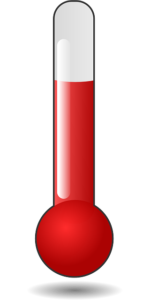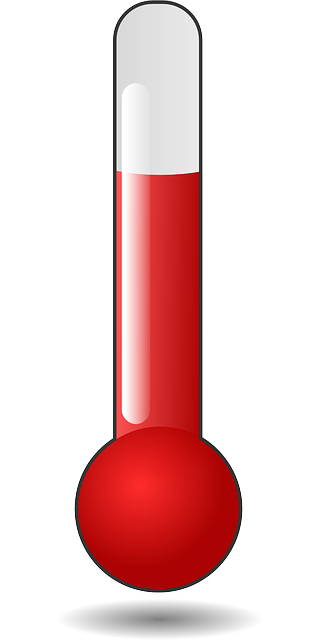Nutrition in hot weather
 How do you get fueled and keep it down when it’s hot?
How do you get fueled and keep it down when it’s hot?
You’ve probably been there.
You are out competing in a race or on a long training run in the heat and you feel nauseous. You know you need to fuel but you can’t force yourself to eat one more hot, sticky-sweet gel or take a drag of that warm sports drink.
Makes me feel a little sick just thinking about it.
The problem is that even though it’s hot out you still need to take in nutrition and fluids.
What’s going on here?
What are some strategies to cope with it?
You are probably already familiar with the symptoms. Nausea, dehydration, dizziness, and a loss of energy that saps your performance.
How do you get here?
When it is hot your body automatically utilizes it’s natural colling systems. For Humans this is our unique ability to sweat. Sweat glands in our skin push fluid to the surface of the skin where it can evaporate.
This is called the ‘heat of vaporization’ and it is quite efficient.
This evaporation takes advantage of a key natural property of water. Evaporation is when water converts from a fluid to a gas. To accomplish this state change water molecules require energy, lots of energy. They take this energy form of heat. Since this water is resting on your skin, that heat is pulled from you skin when the water evaporates.
It may be obvious that evaporation works really well in dry air, and not so well in humid air. In humid conditions the sweat just sits on your skin.
But, nevertheless, sweating to take advantage of the heat of vaporization is a very powerful way that our bodies manage heat. Have you ever been on a hot run and had breeze kick up and blow by? And you feel that sudden rush of coolness? That’s vaporization. The breeze blows the particles away and create room for more vaporization.
But why does this make you nauseous?
Your body isn’t trying to keep your skin cool, that’s just a means to an end. Your body is trying to keep your core cool by using the surface area of your skin. Since the skin is the place where the cooling happens, your body pushes blood away from your core and out to the skin, so that cooled blood can be circulated to the core.
But, there is only so much blood to go around so your body pulls blood away from other core systems to re-route it to your skin. One of these core systems is your digestive system. When you gut doesn’t get enough blood to do it’s job you start feeling nauseous and you can’t process fuel as well.
You have had this feeling on a hot day that the drink or food you took in is just sitting in your stomach ‘sloshing’ around.
What are some solutions?
If you know it’s going to be hot you can do some basic preparation. First, be aware that alcohol and medications can impact how your body reacts. Those 3-4 beers the night before a long run might not have affected you before, but on a hot day can put you in a dehydration deficit out of the gate. Check your medications, even supplements, because you’d be surprised that some common stuff can impact your heat response adversely.
It’s usually a good idea to dress for the heat. More skin exposed typically means more cooling surface but be mindful of sun exposure and be mindful of whether your sunscreen is going to hamper your sweat and cooling.
If you know you’re going to be sweating heavily you can preload some fluids. Drink 16 ounces of sports drink 60 – 90 minutes before you head out. Not so much that you pee it all out but enough so that you’re not in a deficit when you start.
You can try to avoid the heat. In training you can do this more easily by scheduling around the heat. That may or may not be a great idea. If your race is going to be in the heat, you will want to acclimate not avoid.
Especially this time of year when we transition (in the northern hemisphere) from cold to hot it takes a few outing for your body to get used to the heat. Our bodies are amazing and will acclimate if we let them.
Be mindful for those first few hot days that you are going to be challenged by the heat and plan accordingly. Don’t expect your best performances. Practice your heat strategies. Be mindful of what your body is going through as it acclimates.
What do you do during a race in the heat to avoid getting dehydrated?
In the past few years there have been a lot of scare tactics around back-of-the-packers getting sick from drinking too much water or dropping from the heat. It’s important that you understand what your body does in the heat, that’s what matters, not how someone else reacts or what makes the news.
I would question whether you want to take the advice of companies that are trying to sell you nutrition products. There is a built in conflict of interest there.
Frist thing you need to do is get an estimate of your sweat rate. This is very specific to the individual and can vary broadly across conditions.
Very simple process. Weigh yourself before a hot run. Go run. Weigh yourself after. Take into account how much you drank during the run. Whatever is the difference is your sweat rate on that day in those conditions. Do this a few times and you will have a ballpark of your sweat rate.
Once you know this you can calculate how much fluid you are going to lose in a race. For instance, my sweat rate when I was racing was around 16 oz an hour.
When you plan your fluid replacement strategy your goal is not to replace all the fluid. Nor is it to replace all the calories. You can’t keep up. Your goal is to stay in the safe zone. The safe zone is 2-3% of your body weight during the race.
2-3% is normal. That’s a lot. That’s 5 ½ pounds for me. You don’t have to stay even, you just have to stay inside the 2-3%
4-6% is dangerous. That would be over 10lb loss for me. I have gotten close in a marathon but I was very well trained. When you get that dehydrated you will start to feel those symptoms of nausea, dizziness, etc.
In that use case where I lost 8 pounds in a marathon means I was sweating out twice as much as I was able to take in. That is unsustainable for a longer race, if I had to keep going there would have been a reckoning.
What about fueling in the heat? How do you get past that nausea?
You can slow down, stay in the shade, splash yourself with water, get iced drinks or ice on the course, and all those other things to keep cool and that will help with the discomfort.
You can adapt your fueling strategy to the heat. Practice working with ‘lighter’ fare. Dilute your drinks so that you are getting less sugar and more water. Some people have better luck stomaching fruit or chewables or sports drinks like Tailwind. Experiment with it and see what works.
It is also good practice in the heat to take smaller doses. Eat and drink a little bit constantly instead of big slugs at the aid stations.
As always you can train for all of this. You can practice scarcity runs where you go without fuel and water to acclimate your body slowly to the deprivation. This will allow you to bounce back in a race and become less reliant on constant fueling. Your body has plenty of fat. You can train yourself to be able to tap into those fat stores more easily.
The other thing that probably goes without saying is that you need more than water. You need electrolytes – which is a catch all term for sodium, magnesium, calcium and other stuff you lose through sweat.
These elements are important. They impact the way your body absorbs glucose, the way your muscles fire and other basic systems you need to compete. You can get electrolytes through most sports nutrition and many natural foods.
I supplement with Endurolytes from Hammer for my electrolytes. I have had good luck with them and they are easy on the stomach when you can’t otherwise take fuel.
You need all that stuff. Not just water and sugar.
In summary, there is a lot of information around these topics available, but you need to discover what works for you. Your best strategy is to acclimate mindfully to the heat and practice what works for you and your requirements.

